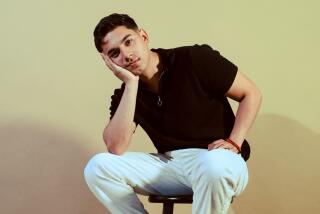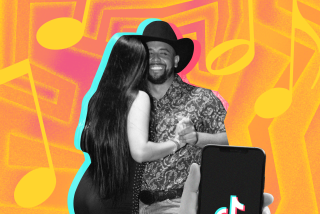Gypsy flamenco dancer gave the form a modern twist
- Share via
Mario Maya, a Spanish-born Gypsy who created memorable works of flamenco dance and as a choreographer broadened the scope of the traditional form by adding elements from modern dance, died Sept. 27 of cancer at his home in Seville, Spain. He was 71.
Maya toured internationally and performed on Broadway, staging productions that combined flamenco dance and song with poetry and drama. They were programmatic works with a text and theme, often a message of Gypsy pride.
His troupe served as an incubator for flamenco dance talent, including dancers such as Israel Galvan and Maya’s daughter, Belen. All three danced in director Carlos Saura’s well-received 1995 performance film “Flamenco.”
Flamenco dance, known for its audibly percussive foot and hand work and for the dancers’ regal carriage, is believed to have originated in Andalusia in southern Spain with the mingling of the region’s Gypsy, Muslim and Sephardic Jewish peasantry.
The dance form evolved from the mixing of Spanish court dances with the flamenco music of the Gypsies. Maya added a new dimension in the 1970s by borrowing from his modern-dance training with prominent figures such as Alvin Ailey and Alwin Nikolais.
Critics often described Maya as a new kind of flamenco dancer with a sensitivity and grace in his movements, deliberately reserved and even somber.
“Art isn’t brute strength but sensitivity,” he once said. “It isn’t dead virtuosity but unexpected grace. The hard thing about art is to make it seem easy, inexplicable and indefinable.”
In 1993, New York Times dance critic Anna Kisselgoff called Maya’s “Three Flamenco Movements,” staged in Manhattan with the dancer, “an impressive experiment in abstraction, often focusing on pure movement. Whatever emotions are expressed tend to come out of pattern rather than passion in Maya’s choreography, and there are few of the outbursts popularly identified with Spanish dance concerts.”
Mario Maya Fajardo was born in Cordoba, Spain, on Oct. 23, 1936, into a Gypsy family that soon moved to Granada. At 5, Maya bought a pair of old boots from a rag man for two pesetas with the goal of learning to dance.
“They had holes like that in the sole, and I put cardboard in,” he said, according to Flamenco World magazine. “I would rehearse. The cardboard wore out, and I would put more cardboard in.”
In Granada, Maya attended a Roman Catholic charity school for impoverished Gypsy children and danced for tourists in the caves of Sacromonte. An English painter, Josette Jones, won a cash prize for her portrait of the teenage dancer. She donated the money to Maya so he could go to Madrid, where he danced at nightclubs.
He joined the Pilar Lopez Spanish Ballet in 1956 and toured internationally with the company for two years. Returning to Madrid in 1959, he formed a dance duo with La Chunga, who was renowned for dancing barefoot.
Maya moved to New York in 1965 and studied modern dance at the Nikolais and Ailey schools before forming the Trio Madrid with dancers Carmen Mora, whom he would marry, and Eduardo “El Guito” Serrano. The trio won the 1976 national prize for flamenco dance from the Catedra de Flamencologia in Spain.
He started a larger dance troupe, the Mario Maya Flamenco Dance Company, in 1968 to produce more ambitious works. In 1976, he staged the show “Camelamanos Naquerar,” with text by a Spanish Gypsy writer, Jose Heredia Maya. The title was in the Gypsy language of Calo and translates as “We Want to Speak Up.”
The next year he presented “Ay, Jondo” (Song of Andalusia), based on Juan de Loxa’s poetry. The show toured Europe with a performance at the Biennial of Flamenco Art festival in Seville. Later works included “Amargo,” based on Federico Garcia Lorca’s poetry.
Maya’s awards for his choreography included the Gold Medal of Andalusia in 1986 and the Spanish Ministry of Culture’s national dance prize in 1992.
His first wife died in a car crash in 1981. In addition to his daughter Belen from that marriage, survivors include his second wife, Mariana Ovalle Ibarra; and two other children.
More to Read
The biggest entertainment stories
Get our big stories about Hollywood, film, television, music, arts, culture and more right in your inbox as soon as they publish.
You may occasionally receive promotional content from the Los Angeles Times.










